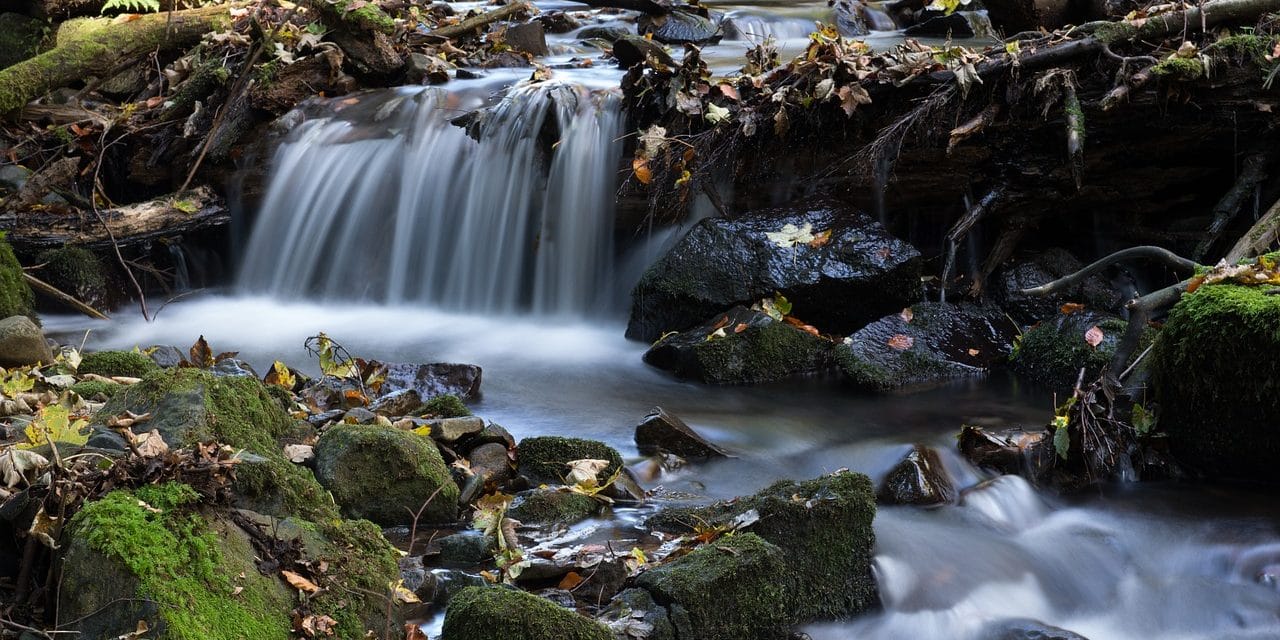ABOUT
In the 1970’s Paul Cunningham, owner and operator of ES&D, had a need to power his off-grid house. He set off on a mission to create an efficient and reliable micro hydro machine. Utilizing a car alternator type micro hydro machine and the wheels he cast himself, he created the first machine. Through many hard-working days and design changes, he was able to produce very efficient pelton and turgo wheels and sold these wheels to other enthusiasts.
After years of consistently improving the design, he was able to create a highly efficient machine that was producing increased levels of power. It had become obvious that anyone with a suitable water source could be producing their very own renewable energy. With this idea in mind, Paul established Energy Systems & Design in 1980.
35 years later Energy Systems & Design is one of the top producers of quality micro hydro energy machines. ES&D prides itself on using only the best components and building the machines in-house in order to maintain the highest levels of quality. With machines all over the world, ES&D has achieved international recognition for being a leading manufacturer of efficient and reliable micro hydro machines.
HOW IT WORKS
ES&D machines are designed to make use of a natural source of running water. Water from the stream is channeled into a pipeline to gain enough head (vertical drop the water falls) to power the system. The water passes through a nozzle, where it accelerates, strikes the turbine wheel and turns the generator shaft. The amount of power produced will depend on the head and flow from the water source. A simplified explanation of the basics behind micro hydro machines can be found here.
There are two basic models which fit two different needs. The stream engine is designed to take advantage of sites with higher head while the LH1000 is designed for sites with low head and high flow. Both models are designed for battery-based power systems, with electricity generated at a steady rate and stored in batteries for later use. When AC power is desired an inverter is used to convert the stored energy. In grid tie applications, the machines are usually used to generate high voltage DC that is compatible with grid tie inverters.
STREAM ENGINE
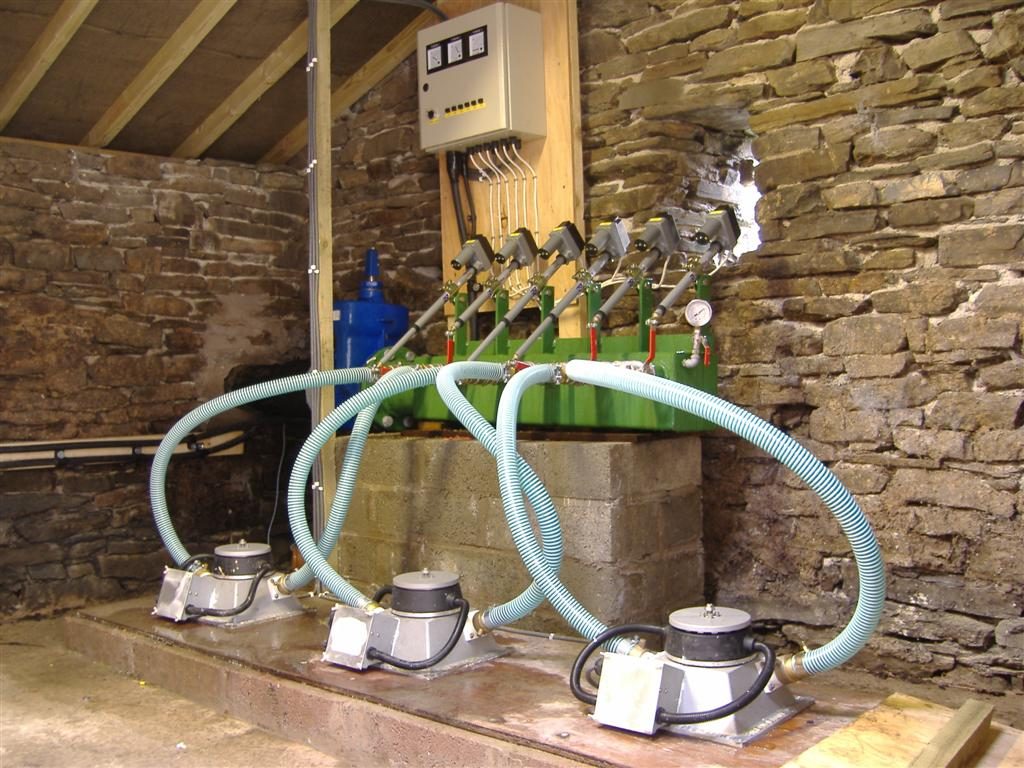
The design below shows the basic set-up for a stream engine machine. Water is channeled into a pipeline and then sent downstream through the piping where it passes through the turbine and then returns back to the source of water. The stream engine can operate at heads of about 3 meters (10 feet) and upward.
The general formula for watts of output is head (in feet) times flow (gallons/minute) divided by 10. In metric, head (in meters) times flow (liters/second) times 5. ES&D machines tend to outperform this calculation but this will provide a good starting point.
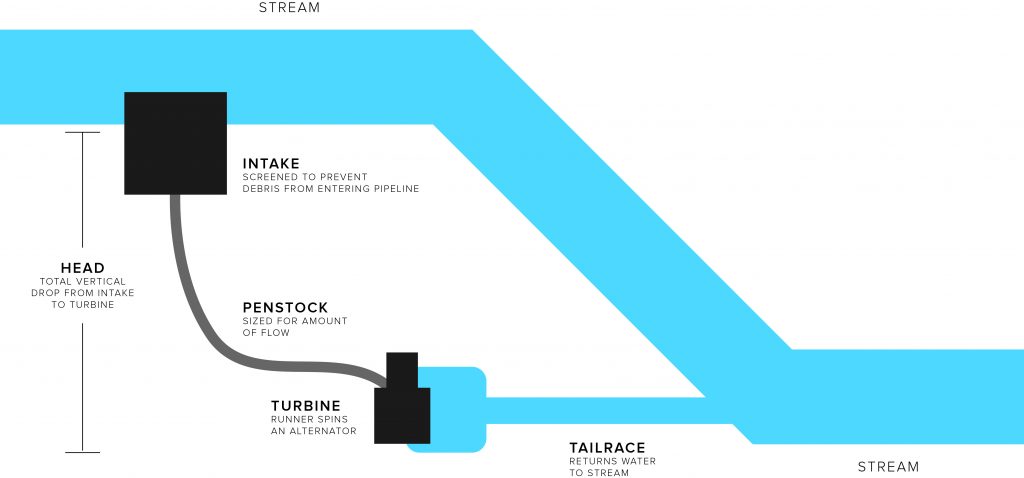
Find out more about the stream engine on the product page.
LOW HEAD
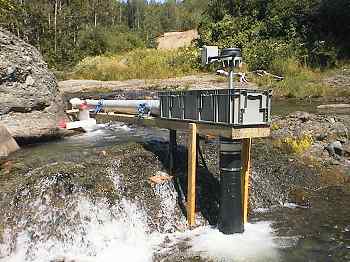
The LH1000 is designed specifically for sites with low head and high flow. The LH will operate best at heads between 1 meter (3 feet) and 3 meters (10 feet) but requires flow of at least 1000 gallons per minute. The design here shows how a low head machine is set up. The water passes through a guide vane assembly and turns the propeller which is connected to the generator. The water then exits through a draft tube that is immersed in the water source.
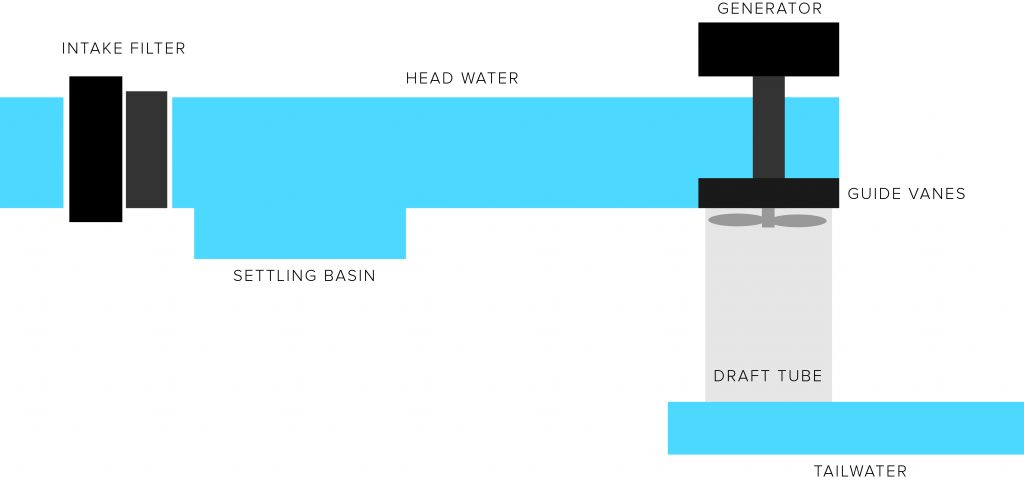
Find out more about the LH1000 on the product page.
GETTING STARTED
In order to get started, you will need to determine if your site meets the requirements for generating micro hydro power. To do this you will need to measure the head and flow of your water source. Click the link to view a helpful guide on determining these measurements. Once you have measured your head and flow, refer back to the website to find out which product fits your needs.
GRID TIE
It is possible to use a hydro machine for use on a grid-tie house or business. The main difference will be the extra costs associated with grid-tie compliance. In order to meet regulatory requirements, it will likely be necessary to hire an experienced installer. Some utilities may offer net metering, which means they will deduct the power produced from your energy bill but may not pay you for excess power. It is important to consult with your utility provider prior to making any decisions. It is possible to by-pass the utility by using the DC power from the hydro machine to heat hot water or air directly. Below is a to-do list before considering grid tie hydro power:


